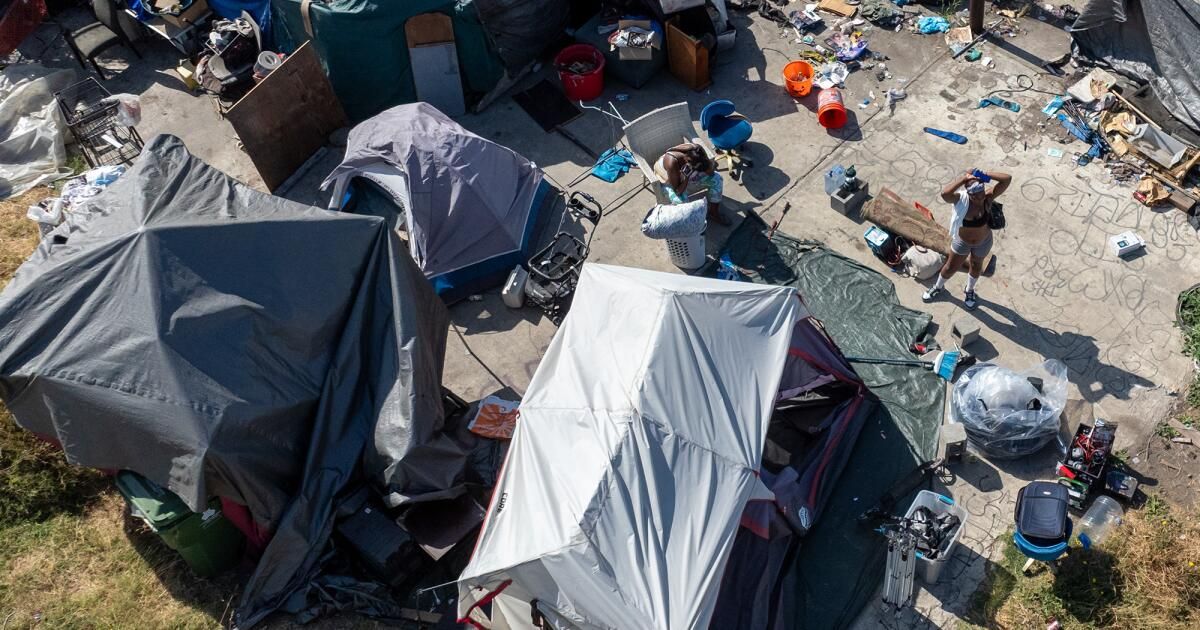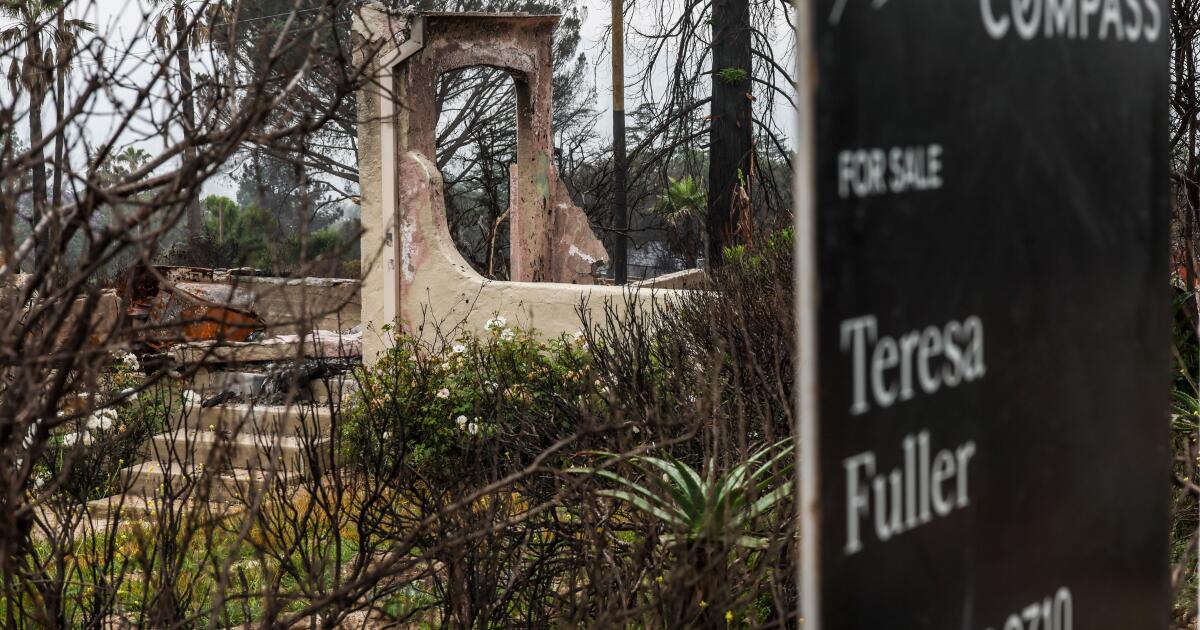Confused? California's ultra-progressive governor, Gavin Newsom, ordered state agencies to clearly clear homeless encampments in their jurisdictions and is persuading cities and towns to follow suit, with state funding.
Homeless advocates are outraged. The group Housing is a human right He described it as “strange” that the liberal governor would adopt such a “ruthless” and “ultra-conservative” hardline approach.
But for anyone paying attention, the governor's decision should be entirely expected: Newsom has been tough on homeless people for decades and is determined to undo Ronald Reagan's failed legacy. Let's hope he succeeds.
It sounds like a made-up story, but it's true: San Francisco pays money in the form of “general assistance” to some of its homeless residents. In the early 2000s, press reports full of stories of homeless people who use taxpayers' money to buy drugs and alcohol.
As a young San Francisco supervisor, Newsom was able to push through an overhaul of the system through a local measure called Care Not Cash. It passed with 60% of the vote and promised to cut general assistance and use the savings to provide shelter beds and ancillary services. Newsom rode his reputation as a serious, bold thinker to the state’s highest office.
In 2009, the city's total homeless population had… It fell by 25%, with chronic homelessness plummeting by 72%, At least officially. But today, both types of homeless people in the City by the Bay are only a fraction below the levels seen in the early 2000s.
And of course, San Francisco's problem has metastasized across the state and region amid a surge housing costsmass Releases from jails and prisonsMore potent opioids and the rise in pandemic-related cases Social isolation and Addiction and mental health problems.
The situation is as visible as it is insoluble. In 2019, the United States Court of Appeals for the Ninth Circuit Martin vs. Boise The decision effectively legalized public camping in the nine Western states if there were not enough shelter beds to accommodate the homeless population.
But last month, a reconfigured Supreme Court reversed Martin v. Boise when it allowed Grants Pass, a small Oregon town, to ban public camping, with fines and possible jail time.
It would be nice if there were fewer camps and more consequences. What we really need are more asylums, but almost all of them are closed, and that is partly Ronald Reagan's fault.
And Gavin Newsom is ready to fix it.
In the 1960s, public opinion turned against involuntary commitments and the abuses of “snake-hole” asylums. California’s social engineers led a campaign for “deinstitutionalization”: moving inpatient psychiatric patients into outpatient care and bailing out the cash-strapped state budget.
In 1967, his fellow Republicans persuaded then-Governor Reagan to sign the historic Lanterman-Petris-Short ActIt seemed to be a win-win: freedom for the confined, personal satisfaction for the social engineers, and a free lunch for the taxpayers.
Within five years, California The nursing home population decreased by almost 70%, and by almost 85% after 25 years. The fever of deinstitutionalization infected state capitals throughout the country. MassachusettsInpatient psychiatric beds were reduced by 90% between 1953 and 1980. In 1950, psychiatric hospitals housed 1 in 3,500 Americans, dropping to 1 in 700 in 1970 and 1 in 3,000 in 1980. Today there are Only about 36,000 patients hospitalized in state psychiatric wards, or 1 in 10,000.
While politicians were voluntarily closing mental hospitals, the Supreme Court granted previously unknown “rights” to the mentally ill in a series of surreal decisions. In 1975, a The unanimous court wrote“Can the state lock up harmless mentally ill people for the sole purpose of saving its citizens from exposure to those with different customs?” He compared involuntary commitment to the confinement of “physically unattractive or socially eccentric” people to avoid “public unrest.”
Meanwhile, penny-pinching politicians dragged their feet on funding the community clinics and outpatient care that were supposed to accompany deinstitutionalization. The streets and prisons quickly became America's new mental asylums.
While mental illness is not the only cause of growing homeless encampments, as Psychiatric Times noted in 2020, “there is clearly a link… Mental illness had preceded homelessness in about two-thirds of cases.” An article in the Los Angeles Times Analysis in 2019 showed that nearly 70% of the county's homeless population was mentally ill or addicted to drugs. 2022 University of California, San Francisco Survey It was found that 82% of homeless people in California reported having a mental health problem and 66% had recently experienced symptoms.
The Golden State has spent (and barely) tracked) more than 24 billion dollars Since 2018, services have been provided to homeless people, including mental health and substance abuse treatment. But the UCSF study showed that only 14% of homeless people with mental illness in California received outpatient care and only 20% received medication.
Angered by the crisis, Newsom has been pushing to reform the state's byzantine and lenient guardianship laws and create court-ordered outpatient treatment plans, or CARE Courts.
But last year, the governor went even further and showed himself to be a radical reformer, that is, a reactionary. First, he promoted a bond measure The measure passed in March builds, yes, nursing homes. The narrowly approved ballot measure seeks to build facilities with beds for 10,000 patients and provide four times that number of outpatient treatment spaces.
Second, it gutted the 1967 law signed by Reagan that threw open the doors to asylum. Changes backed by Newsom empowered qualified third parties (mental health professionals) to impose a guardianship on a person suffering from substance abuse or a mental health disorder, if their condition places them at “substantial risk of serious harm.”
California's about-face is sure to face legal challenges based on absurd Supreme Court precedents from the 1970s. Still, it represents a common-sense step forward on a persistent part of the homelessness problem, and Newsom deserves credit.
Whether or not we involuntarily institutionalize and treat the mentally ill and addicted raises existential questions about free will, dignity, and individual autonomy. But as a practical and moral matter, how can fostering grinding misery on our streets make us enlightened or make our communities more livable for us or them?
Sean Kennedy is the executive director of the Coalition for Law, Order and Safety, a think tank in Alexandria, Virginia, and a fellow at the Maryland Public Policy Institute.












